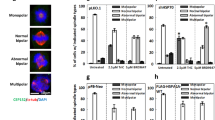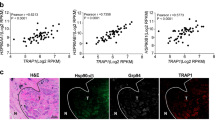Abstract
The most prominent cellular changes in heat-shock response are induction of HSPs synthesis and reorganisation of cytoskeleton. Vincristine was used as a tool to evaluate the integrity of microtubules in 9L rat brain tumour cells recovering from heat-shock treatment. Cells treated at 45 degrees C for 15 min and recovered under normal growing condition became resistant to vincristine-inflicted cytotoxicity and microtubule destruction. Among all HSPs, the level of HSP70 and the degree of vincristine resistance are best correlated. HSP70 and tubulin were found to be associated with each other as they were co-immunoprecipitated by either anti-HSP70 or anti-beta-tubulin monoclonal antibody. The current studies establish for the first time that HSP70 can complex with tubulin in cells and this association may stabilise the organisation of microtubules thus protect the heat-treated cells from vincristine damage. These findings are noteworthy in combining hyperthermia and chemotherapy in the management of malignant diseases.
This is a preview of subscription content, access via your institution
Access options
Subscribe to this journal
Receive 24 print issues and online access
$259.00 per year
only $10.79 per issue
Buy this article
- Purchase on Springer Link
- Instant access to full article PDF
Prices may be subject to local taxes which are calculated during checkout
Similar content being viewed by others
Author information
Authors and Affiliations
Rights and permissions
About this article
Cite this article
Lee, WC., Lin, KY., Chen, KD. et al. Induction of HSP70 is associated with vincristine resistance in heat-shocked 9L rat brain tumour cells. Br J Cancer 66, 653–659 (1992). https://doi.org/10.1038/bjc.1992.332
Issue Date:
DOI: https://doi.org/10.1038/bjc.1992.332
This article is cited by
-
Overexpression of heat shock transcription factor 1 enhances the resistance of melanoma cells to doxorubicin and paclitaxel
BMC Cancer (2013)
-
Antirestenotic Effects of a Novel Polymer-Coated D-24851 Eluting Stent. Experimental Data in a Rabbit Iliac Artery Model
CardioVascular and Interventional Radiology (2007)
-
Drug resistance in brain tumors
Journal of Neuro-Oncology (1994)



